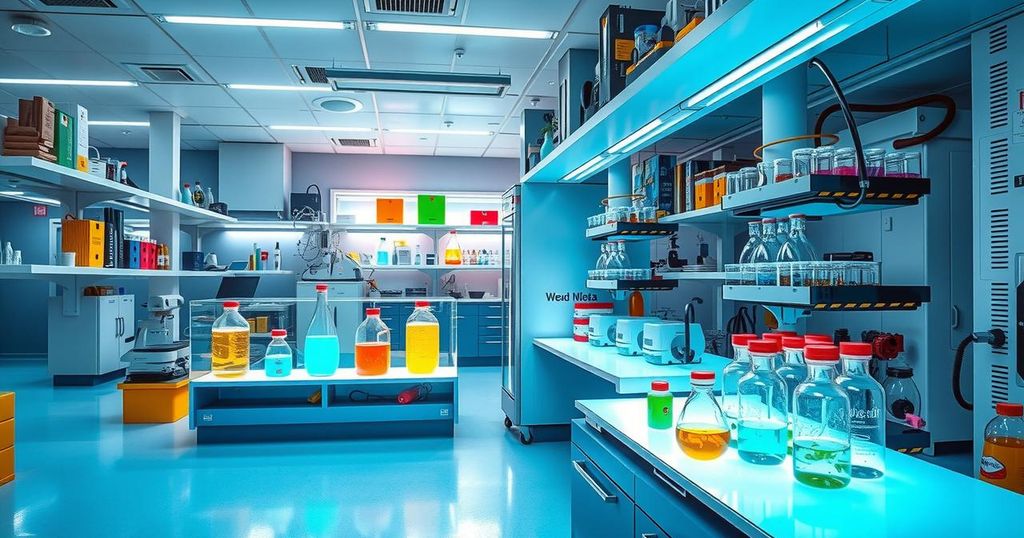AI Breakthroughs Propel Advances in Health and Science
New research papers reveal breakthroughs in AI that speed up materials discovery and enhance radiology diagnostics. These advancements stem from collaborations involving Microsoft, academia, and healthcare. MatterGen focuses on generating new materials efficiently, while RAD-DINO aims to provide faster data for doctors, improving patient care and diagnosis accuracy.
Artificial Intelligence (AI) has already woven itself into the fabric of our daily lives. But now, it’s digging deeper, pushing boundaries in research that could change the world, like finding innovative materials and enhancing medical practices. New studies published in the notable journals Nature and Nature Machine Intelligence illustrate how generative AI models can drastically accelerate the discovery of new materials while enabling doctors to analyze radiology results far more quickly than before.
This remarkable progress results from extensive partnerships among various entities, including Microsoft, academia, and private industries. MS Research has unveiled robust generative AI models built on Microsoft Azure, targeting the fields of materials science and radiology. These powerful models aim to propel development in these areas through public access, potentially unlocking their applications more efficiently.
Chris Bishop, director of Microsoft Research AI for Science, highlighted the dual language of generative AI, stating, “Science may be the most important application of AI… [it] will allow us to harness AI for tackling humanity’s most pressing challenges.” It’s not just about people; these models are grasping nature’s nuances, from molecules to proteins.
In the quest for discovery, materials design often plays the unsung hero, underpinning advancements in countless fields. For instance, we rely on steel and chips, but developing new materials typically involves a long, costly process – years can pass while sifting through countless options, with no promise of success. The new approach, dubbed MatterGen, changes this process. It works almost like modern text-to-image programs, proposing specific properties and generating materials that fit those parameters.
Initial experiments with MatterGen have shown promise, yielding materials that are remarkably close to the desired properties. This model could revolutionize the speed and efficiency of generating materials across sectors, from electronics to biomedical engineering, which could lead to sustainable energy solutions, potent new batteries, and enhanced medical imaging technologies.
“From an industrial perspective, the potential here is enormous,” remarked Tian Xie, principal research manager at AI for Science in Cambridge. Accelerating material discovery could transform energy and healthcare industries significantly, as material innovations have historically propelled human progress.
On the medical front, the second breakthrough focuses on helping healthcare practitioners access critical medical data fast, enhancing diagnoses and patient care. In collaboration with Mayo Clinic, Microsoft Research is working on multimodal foundation models that bring together both text and images for radiology. This effort emphasizes the RAD-DINO system, which aims to ease the integration of AI with existing healthcare processes.
The team’s research involves leveraging AI technology alongside Mayo Clinic’s extensive X-ray data. RAD-DINO seeks to create a model capable of quickly generating reports, assessing the correct placement of tubes in chest X-rays, and comparing current images to earlier ones. This could drastically boost how clinicians review images, leading to quicker decision-making and improved patient outcomes.
Javier Alvarez Valle, senior director at Microsoft Health Futures UK, expressed enthusiasm about the collaboration with Mayo Clinic, mentioning the pressing need for speedier medical practices. “…our work brings together the best experts from AI and medicine to make it happen,” he stated. A key obstacle lies in integrating these innovative AI tools into clinical workflows safely, but their collaboration is focusing on addressing these challenges head-on.
The research from Microsoft and its collaborators hints at a bright future where AI reshapes both materials science and healthcare. By utilizing generative AI, we may soon navigate challenges that once felt insurmountable, accelerating diagnoses and fostering groundbreaking material discoveries and applications.
(Photo: A researcher synthesizes a MatterGen-generated material in the lab, courtesy of Shenzhen Institute of Advanced Technology)
In summary, the latest research highlights significant strides in AI’s application to both materials science and healthcare. The MatterGen model makes discovering new materials faster and more targeted, while RAD-DINO aims to enhance medical diagnoses by streamlining data analysis for doctors. By combining the strengths of AI with scientific inquiry, these developments promise an exciting future for innovation across multiple sectors.
Original Source: news.microsoft.com




Post Comment